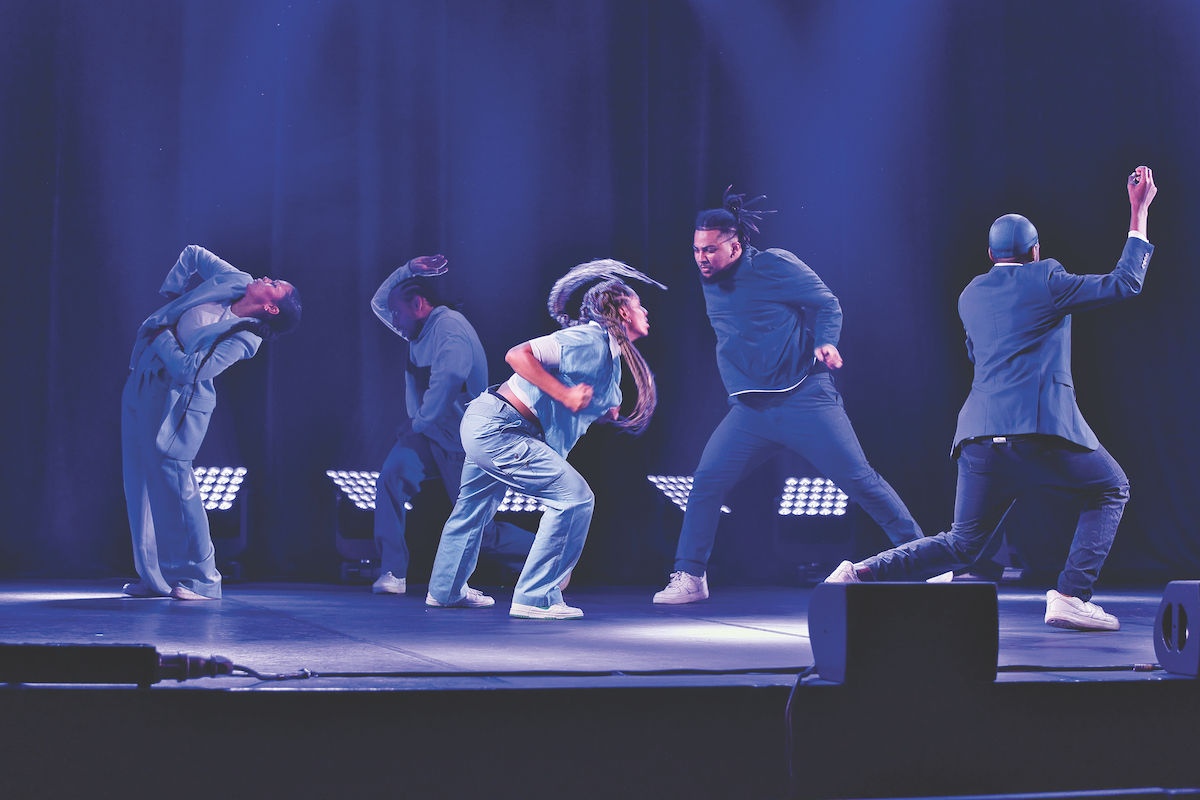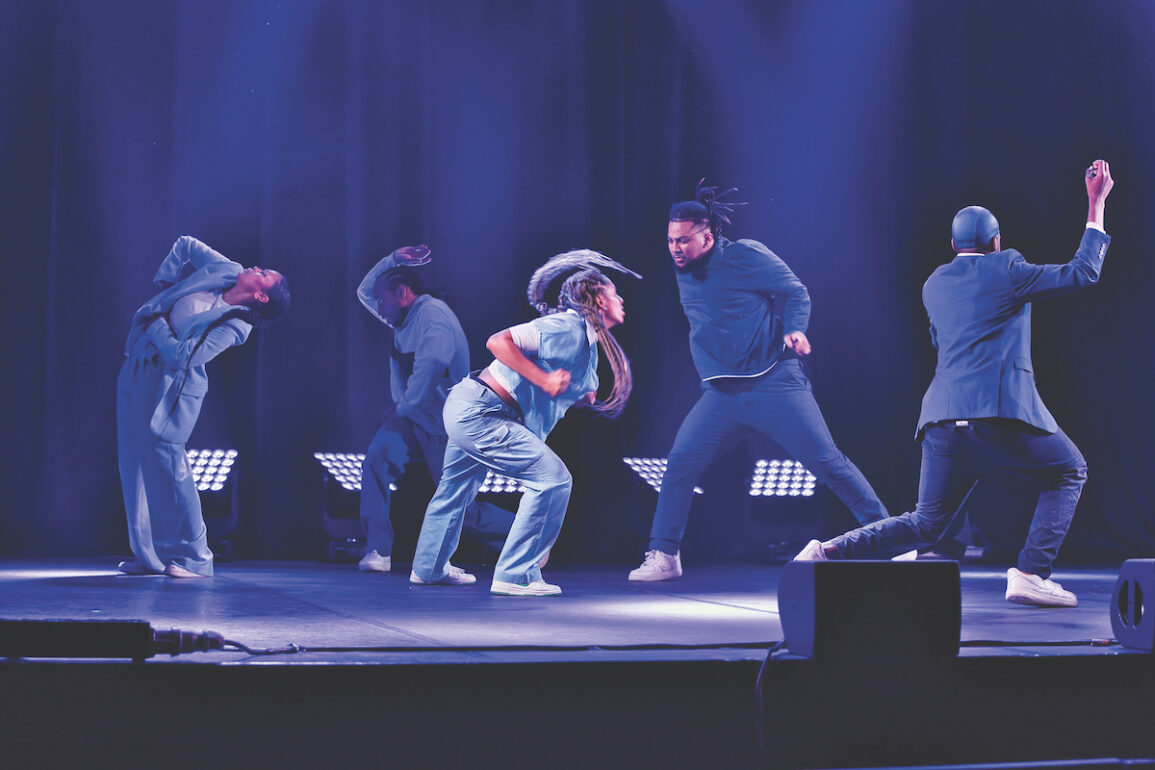
From her home in Richmond, Micaya, who goes by a single name, could be watching the sunset on the East Bay hills, or spinning 180 degrees to view the San Francisco skyline lit up at night. Instead, the choreographer, teacher and founder-producer/artistic director of the annual San Francisco International Hip Hop DanceFest has for 25 years set her gaze on the world’s best hip-hop performers and companies.
In 2023, which marks the festival’s 25th anniversary and the hip-hop genre’s 50th anniversary, what began as a showcase for Bay Area talent has grown to become an international gathering of “the best of the best.” Three performances, to be held Nov. 11-12 at the Palace of Fine Arts Theatre in San Francisco, feature dance companies from San Mateo, Santa Rosa, Los Angeles, Detroit, Philadelphia, the U.K., France and Belgium. Special events at each performance celebrate the occasion with onstage “Echo the Moves” choreography and “Soul Train Style” freestyle contests, with a gala awards event offering a kids-only onstage freestyle session, fashion show and auction, a DJ and an appearance by the Bay Area’s best Turf dance performers.
Micaya’s vision and mission continue unabated, despite the festival’s growth. “The underlying truth is that I had a deep desire to elevate what was considered artistic and was respectful of this dance genre,” she says. “When we started, it was unheard of to see hip-hop in a theater or concert hall.”
The San Francisco International Hip Hop DanceFest began at Theatre Artaud and moved to the current venue while expanding the roster of local artists with the infusion of dancers from around the globe. Micaya sends out a call for applications in September, a cycle that closes in May and results in many submissions. “They come from everywhere, and each year I’m struck by how unbelievable, talented and beautiful these pieces of art are and how hard it is to curate,” Micaya says.
She says what was true when the festival first launched in 1999 remains true today. The quest for respect and money to support the genre never ends. Her absolute commitment to paying the dancers, and providing transportation and other necessities, is unwavering.
“If I can treat the artists well and we do well with audiences, that’s indicative of the festival doing well,” Micaya says. “When it started from scratch, we needed to learn about how ballet companies get funding and why we struggle. Why do we have to constantly be trying to change the idea that hip-hop is an adolescent, pre-professional art form? I can’t find an answer to that, but what I do know is the pandemic wiped out our funding—like it did for so many arts organizations—and we’re still climbing our way back.”
Originally, people came to see friends and dancers they knew in the Bay Area. “Now they come because it’s meticulously curated and it’s going to be incredible, with people from all over the world,” Micaya says.
This year’s artists from the greater Bay Area and California include San Mateo’s Str8jacket, with “Str8jacket with a Capital S,” a dynamic piece Micaya says celebrates street and club dance forms from hip-hop and locking, to waacking and popping. Ben “Nebula” Donner arrives with the layered, mesmerizing, articulate performer’s “Calm before the Storm,” a last-minute program substitution from Santa Rosa. The premiere hip-hop troupe Versa-Style Dance Company, from L.A., performs “Rooted Rhythms,” paying tribute to dance styles including waacking, popping and house dance, as well as Latinx styles such as salsa, cumbia, merengue and bachata.
London-based Flawless, led by Marlon Wallen, returns for what guarantees to be a spectacular performance. “They are exceptional at the explosive movements,” Micaya says. “The B-boy moves, flips, things that make people say, ‘Wow.’ They’re high-energy, super entertaining and theatrical. They’re slick because the route they’ve taken is well-suited for television and for audiences of all ages, but it’s more than that. It’s well-structured and presented.”
Wanted Posse, which Micaya refers to as “the renowned French company based in Paris I was honored to have apply,” comes to the festival with “Dance N’ Speak Easy.” The work is set in a New York speakeasy during Prohibition and melds hip-hop with other African American dance styles such as Lindy Hop, Charleston, swing and more.
“They’re incredibly polished, and the work they bring is a storytelling, fun, athletic piece,” Micaya says. “The guys in the speakeasy drink, fight and then, when a woman comes in, they go bravado. The music is great because it has jazz, James Brown and other music that comes from these other dance styles.”
Selasi Dogbatse is a member of the dance group Paradox-Sal, which has appeared at the festival in the past. Now, she has formed her own titular company of six dancers and returns with “A Piece of Me.” Micaya says the dance is vulnerable and powerful at the same time.
“Selasi has said the dance comes from stories about their own doubts and barriers society has thrown up at them and how they’ve overcome them,” Micaya says. “It’s introspective, deep. As a choreographer, I’m absorbed by the decisions made: the moves, the placements onstage, the interactions between the dancers.”
Detroit’s House of Jit, with their “Rhythm of the Feet,” affords a look at what Micaya calls dancers who are “legends of their craft” and jit, a hip-hop style that was established even before better-known Chicago-based foot-working.
Stepping out of festival-director mode to address women in the field of hip-hop, Micaya says female company directors tell her they’re finding more daylight, but there’s still work to do. It’s a truth she knows all too well, that causes her to encourage her peers to stay in the game and refuse compromise.
“I’m a female and somehow, I have this festival,” she says. “I don’t own it and it’s not about me, but I was raised to just do me. I didn’t have a conventional way of how I had to be. I followed my heart. That sounds cliché. But if you do that, you feel alive. You feel like it’s a worthwhile experience.”
A final factor in the festival being a “worthwhile experience,” she says, is due to impromptu backstage interactions that occur. The different groups share movements and often “adopt,” or integrate, the movements into their own signature styles. Hip-hop, Micaya suggests, is an “open book” to which new chapters are always being added. A person might hope the same thing is true for San Francisco International Hip Hop DanceFest as it lives on through 2024 and beyond.
This post was originally published on this site be sure to check out more of their content.









